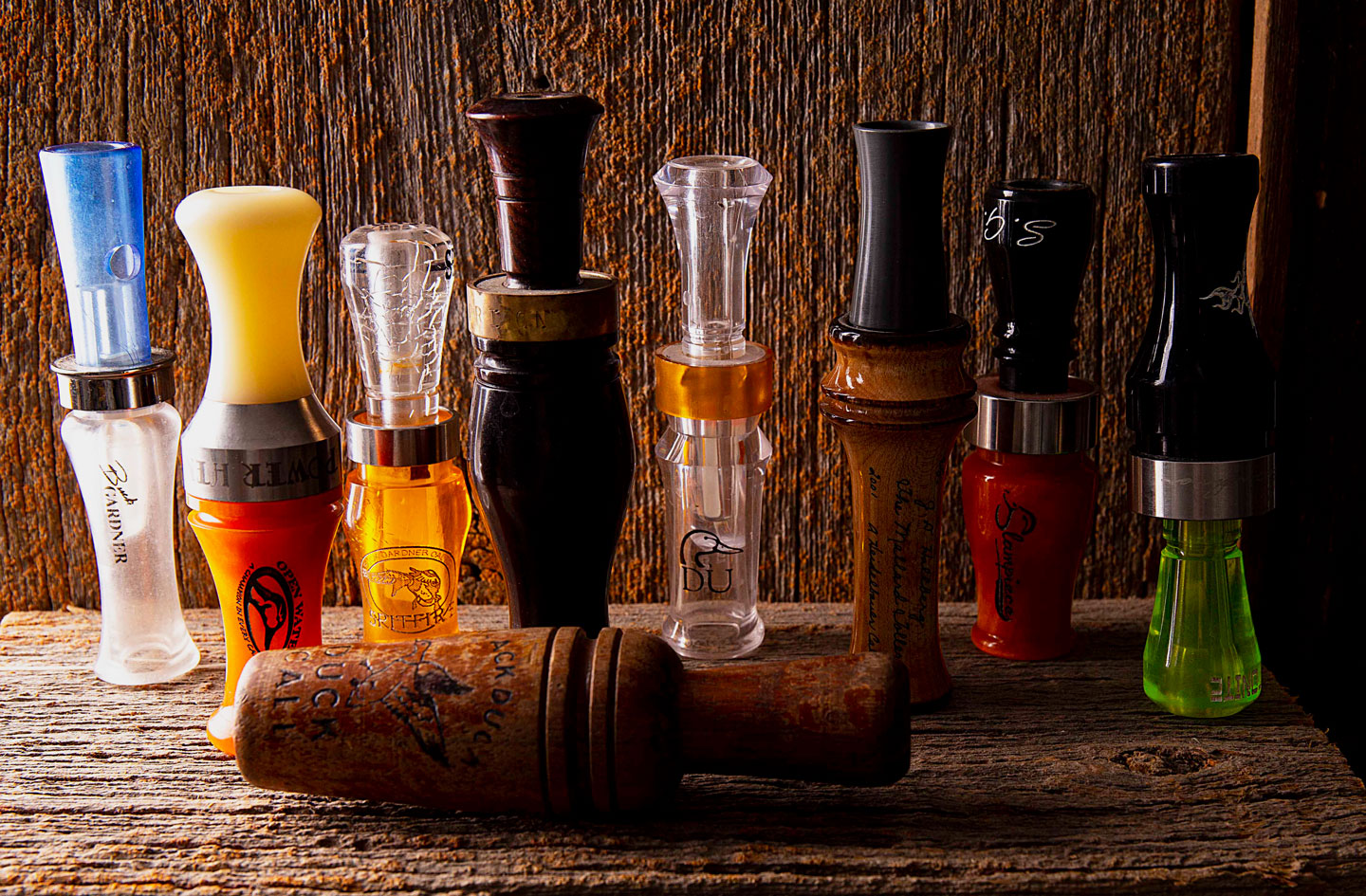
By Todd Mills
I remember getting my first “real” duck call. It was a gift from a friend, and I couldn’t wait to give it a try. After several failed attempts to make it sound like a duck, I realized that maybe it wasn’t the right call for me or maybe I just wasn’t very good at blowing it.
It was then that I went on a search to find the right call for my skill level and my budget. I forged ahead and found myself learning everything I could about calls and, most importantly, how to make the right sounds with the call I was using. It became apparent that not only was the duck-call world full of different shapes and varieties, but it seemed everybody had a different opinion of what call worked best.
When working outdoor shows for several years, without a doubt the question I got asked the most was: “What duck call should I buy?”. You may have had this same question.
The following is a checklist if you are looking for a call or are considering buying one for someone else. After all, with the holidays fast approaching, what duck hunter wouldn’t want another call to add to their collection?
Material is Important
When choosing a duck call, you must first decide on the type of material you’re going to use. Duck calls basically come in three materials: polycarbonate, acrylic and wood.
The basic difference between acrylic and polycarbonate is the molding process. A polycarbonate call will not last as long but also will be cheaper. Acrylic is a very dense material and will last longer and allow you to produce more volume through the call. Wood calls can provide great sound, but are not as versatile or durable.
Bottom line here is your budget. My personal recommendation — purely based on investment — is for any beginner to start with a polycarbonate call. No need to spend over $100 on a call when you’re not even sure how to blow it yet.
Single Reed or Double Reed?
First mistake I ever made when diving into the duck call market was buying a single reed for my first call. I got talked into it by a sales rep and was fascinated by the sounds he could make with it. Unfortunately, I couldn’t make the thing sound anything like he did. For the beginner, I would highly recommend a double-reed call. A double-reed call doesn’t take as much air flow and will make the basic sounds you need to call ducks. It will not, however, allow you to ring loudly. Single-reed calls allow for louder, higher notes and require more air flow to operate. Intermediate to advanced callers are more suited for a single-reed call, but either can work depending on the area you are hunting.
What Terrain are You Hunting?
Seems strange that a duck call choice can be made on what type of terrain you are hunting, but different set-ups and water areas require different sounds. For example, I hunt a lot of open water and public areas. When dealing with large bodies of open water with other hunters around you, being able to blast a “hail call” to attract high-flying ducks can be advantageous. A single-reed call may be best for you in this type of setting. When hunting smaller, private waters, you won’t need an attention-getter call. Softer, raspier notes with a double-reed call might be best here.
Keep Your Call Clean
Much like your gun, calls need to be maintained. When hunting river areas, sand can build up inside the call around the reed. After each hunt you should pull the call apart (if it’s a single mold) and run hot water through it. Make sure all small particles are removed. Leave the call open overnight to dry. Reeds will need to be changed periodically as well. When the reed turns a brownish, milky color, it’s time to change it. Numerous times I’ve opened someone’s call and the reed is brittle and the edges dirty. You don’t want that. Keeping your call clean will allow it to keep from sticking and provide a smooth, open chamber for air flow.
When I first started hunting back in the 70s, there were only a few duck-call manufacturers. Obviously, that’s not the case now. The types of calls and brands can be overwhelming. Find the call that fits your needs the best. Some come with a beginner calling video, which can be extremely helpful. Most importantly, once you decide on a call, spend time learning the right sounds to make.
